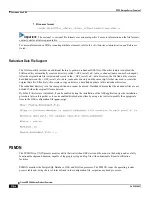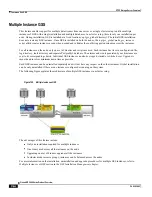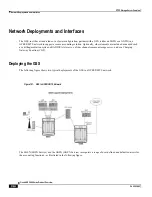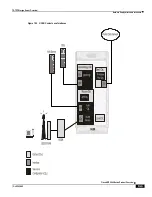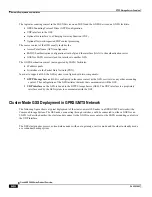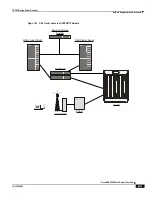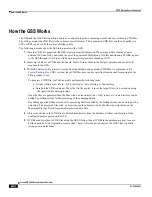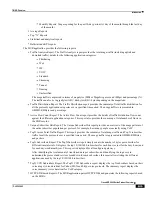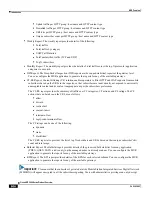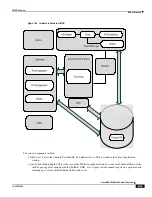
GTPP Storage Server Overview
Features of the GSS ▀
Cisco ASR 5000 Series Product Overview ▄
OL-22938-02
Cluster Support in GSS
The cluster mode feature enables GSS to provide high availability and critical redundancy support to retrieve CDRs in
failure of any one of the system. A GSS cluster is two or more GSS systems, or nodes, that work together as a single,
continuously available system to provide applications, system resources, and data to GSS users. Each GSS node on a
cluster is a fully functional, stand-alone system. However, in a clustered environment, the GSS nodes are connected by
an interconnected network and work together as a single entity to provide increased availability and performance.
Highly available clusters provide nearly continuous access to data and applications by keeping the cluster running
through failures that would normally bring down a single Server system.
A cluster offers several advantages over traditional single-server systems. These advantages include:
Support for failover and scalable services.
Capacity for modular growth.
Low entry price compared to traditional hardware fault-tolerant systems.
Reduce or eliminate system downtime because of software or hardware failure.
Ensure availability of data and applications to GSS user, regardless of the kind of failure that would normally
take down a single-server system.
Provide enhanced availability of the system by enabling you to perform maintenance without shutting down the
entire cluster.
Cluster Components
Following are the cluster components work with GSS to provide this functionality:
GSS Cluster Node
A GSS cluster node is a GSS server that runs both the GSS Application software and Cluster Agent software.
The Cluster Agent enables carrier to network two GSS nodes in a cluster. Every GSS node in the cluster is
aware when another GSS node joins or leaves the cluster. Also, every GSS node in the cluster is aware of the
resources that are running locally as well as the resources that are running on the other GSS cluster nodes.
Each GSS cluster node is a stand-alone server that runs its own processes. These processes communicate with
one another to form what looks like (to a network client) a single system that cooperatively provides
applications, system resources, and data to GSS users.
Common Storage System
A common storage system is a Fiber Channel (FC) -based cluster storage with FC drives for the servers in the
cluster environment. It is interconnected with GSS cluster nodes with carrier class network connectivity to
provide high level redundant storage and backup support for CDRs. It serves as common storage for all
connected GSS cluster nodes.
This system provides high storage scalability and redundancy with RAID support.
Important:
For information on Switching CDRs from HDD to GSS and Switching CDRs from GSS to HDD
procedures, refer to the
AAA Interface Administration and Reference Guide
.
Summary of Contents for ASR 5000 Series
Page 1: ......
Page 26: ......
Page 48: ...New In Release 10 0 SCM Features Cisco ASR 5000 Series Product Overview OL 22938 02 ...
Page 50: ......
Page 58: ......
Page 68: ......
Page 126: ......
Page 138: ......
Page 146: ......
Page 218: ......
Page 236: ......
Page 356: ......
Page 374: ......
Page 422: ......
Page 496: ......
Page 572: ......
Page 654: ......
Page 700: ......
Page 726: ......
Page 784: ......
Page 816: ......
Page 844: ......
Page 906: ......
Page 926: ......
Page 942: ......
Page 943: ...Cisco ASR 5000 Series Product Overview OL 22938 02 Chapter 30 Technical Specifications ...
Page 966: ......
Page 972: ......














